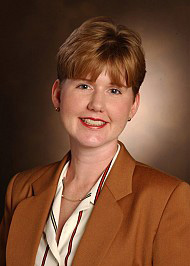Using technology developed here, Vanderbilt University Medical Center (VUMC) has organized a large database of children who are deaf or hard of hearing that combines data from 48 programs in four countries — about 7,000 children so far.

The multi-center study, called LSL-DR for Listening and Spoken Language Data Repository, is overseen by Tamala Bradham, DHA, PhD, a quality and safety adviser in VUMC’s Center for Quality, Safety and Risk Prevention. Educators, hearing healthcare providers and researchers will be able to use the database to assess educational, speech and language outcomes in children who are deaf or hard of hearing, with the goal of having comparable speech and language skills as their typical-hearing peers, she said.
“We are seeing that if the children receive their hearing technology early and are enrolled in appropriate early intervention, that these children can talk just like you and me. They can listen, they can talk, they can learn to read,” she said. “With the early intervention by highly skilled educators and therapists, they’re able to go to their school of choice a lot earlier than before.”
Bradham is the lead author of a recent paper about the LSL-DR in Language, Speech, and Hearing Services in Schools, a publication of the American Speech-Language-Hearing Association (ASHA). She said the overview paper will be the first in a series.
Bradham, who previously was on the faculty at the Vanderbilt Bill Wilkerson Center, began working on the project nearly a decade ago through a contract with OPTION Schools Inc., a nonprofit organization of listening and spoken language programs and schools for children who are deaf or hard of hearing in Canada, South America, Europe and the United States.
The database was made possible by a Vanderbilt technology known as Research Electronic Data Capture (REDCap) that could make large research projects across the world much more common.
REDCap was developed in 2004 by Paul Harris, PhD, professor of Biomedical Informatics and Biomedical Engineering, with a goal to give researchers an easy way to collect and manage data for scientific projects.
“My favorite REDCap stories center around innovative research teams finding ways to use the software platform to do good in the world,” Harris said. “Dr. Bradham’s work with LSL-DR supporting pediatric deafness and outcomes research definitely fits this storyline. Dr. Bradham is not only a consumer of the platform, but she’s also a key contributor of ideas and feedback.”
Before the database, researchers had limited data sets about children with hearing loss. It was challenging for small nonprofit schools and programs to systematically collect outcomes for a variety of reasons such as confidentiality, lack of standardized processes for collecting outcomes across the programs and data security.
Before data could be collected, researchers spent two years developing the REDCap database and piloting the work flow process and trainings before going live in late 2010.
There is now enough data available for researchers to determine the effectiveness of their programs and study other schools that are excelling.
“We’re going to be able to study the impact of having highly specialized professionals combined with early intervention and early technology on outcomes of children who are deaf or hard of hearing,” Bradham said.
Hearing loss is one of the most common birth defects in America, with approximately three in 1,000 babies born with permanent hearing loss.
The Centers for Disease Control and Prevention has estimated that the lifetime economic cost to the public for a child with hearing loss is more than $400,000, mostly for special education services. When children are not identified, and do not receive early intervention, costs rise to about $1 million per individual.












